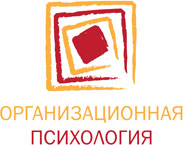
 |
Organizational Psychology |
Editorial officeAddress: 20, Myasnitskaya, 101000 Moscow, Russia
|
Aleksandr Erofeev1, Takhir Bazarov2Original competences modeling technologies
2014.
Vol. 4.
No. 4.
P. 74–92
[issue contents]
Characterization of competencies as key to assessing staff have been actively used since the mid-1990s. Of course, the organization’s staff was evaluated and selected before. If we talk about formal staff appraisal system, they first appeared in the US companies in the early 20 century. In the 1960s. were used scheme taking into account the strategic objectives of the business, which formed the basis of modern methods of evaluating-staff. Traditional industrial-organizational psychology began with a separate analysis of the job and of the worker and attempts to combine them. This approach has been very successful in predicting academic performance based on tests of academic type, but was completely inadequate for predicting the performance of the work at the senior level, which is very important in today’s business. An approach based on competencies, allows to link into a whole human resource management in recruitment, career planning, performance assessment and development in the coming years. However, with the introduction of competency in the practice of staff managementin organizations has not been without difficulties, including a purely terminological. In this article we offer our readers two possible technology to build competency/competencies models. One of them developed in the paradigm MIKRIS (A.K. Yerofeev), another one — more than 20 years used by consultants of Center for Personnel Technologies – 21st Century (T.Yu. Bazarov). Both technologies use different approaches to building models, however, they have in common is that the authors areconvinced of the need in each case to create exactly the model of competencies/competences, whichis relevant to the conditions of a particular organization. Technology MIKRIS (Methods of extractionand recognition criteria for comparison) is described as a sequence of seven stages: analysis of the work; the allocation of the four groups of criteria; extracting behavioral examples; development of rating scales; stepwise selection methods of evaluation; validation (pilot) study; users training. Methods of creating competencies model according to the “CKT – 21” includes four stages: collection of documents; analysis of the collected documents; formation model for the position; verification of themodel qualitative methods.
Citation:
Erofeev A., Bazarov T. (2014) Avtorskie tekhnologii razrabotki modeley kompetentsiy [Original competences modeling technologies]. Organizacionnaâ psihologiâ (Organizational Psychology), vol. 4, no 4, pp. 74-92 (in Russian)
| |||||||||||||||